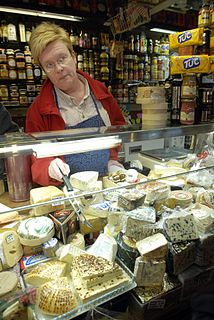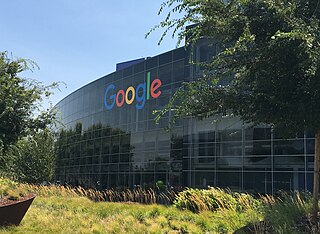
In commerce, supply-chain management (SCM), the management of the flow of goods and services, involves the movement and storage of raw materials, of work-in-process inventory, and of finished goods from point of origin to point of consumption. Interconnected, interrelated or interlinked networks, channels and node businesses combine in the provision of products and services required by end customers in a supply chain. Supply-chain management has been defined as the "design, planning, execution, control, and monitoring of supply-chain activities with the objective of creating net value, building a competitive infrastructure, leveraging worldwide logistics, synchronizing supply with demand and measuring performance globally." SCM practice draws heavily from the areas of industrial engineering, systems engineering, operations management, logistics, procurement, information technology, and marketing and strives for an integrated approach. Marketing channels play an important role in supply-chain management. Current research in supply-chain management is concerned with topics related to sustainability and risk management, among others. Some suggest that the “people dimension” of SCM, ethical issues, internal integration, transparency/visibility, and human capital/talent management are topics that have, so far, been underrepresented on the research agenda.

Retail is the process of selling consumer goods or services to customers through multiple channels of distribution to earn a profit. Retailers satisfy demand identified through a supply chain. The term "retailer" is typically applied where a service provider fills the small orders of a large number of individuals, who are end-users, rather than large orders of a small number of wholesale, corporate or government clientele. Shopping generally refers to the act of buying products. Sometimes this is done to obtain final goods, including necessities such as food and clothing; sometimes it takes place as a recreational activity. Recreational shopping often involves window shopping and browsing: it does not always result in a purchase.

The point of sale (POS) or point of purchase (POP) is the time and place where a retail transaction is completed. At the point of sale, the merchant calculates the amount owed by the customer, indicates that amount, may prepare an invoice for the customer, and indicates the options for the customer to make payment. It is also the point at which a customer makes a payment to the merchant in exchange for goods or after provision of a service. After receiving payment, the merchant may issue a receipt for the transaction, which is usually printed but can also be dispensed with or sent electronically.

Distribution is one of the four elements of the marketing mix. Distribution is the process of making a product or service available for the consumer or business user who needs it. This can be done directly by the producer or service provider, or using indirect channels with distributors or intermediaries. The other three elements of the marketing mix are product, pricing, and promotion.
In marketing, value migration is the shifting of value-creating forces. Value migrates from outmoded business models to business designs that are better able to satisfy customers' priorities. Marketing strategy is the art of creating value for the customer. This can only be done by offering a product or service that corresponds to customer needs. In a fast changing business environment, the factors that determine value are constantly changing.

Discounts and allowances are reductions to a basic price of goods or services.

Spark New Zealand Limited, more commonly known Spark, is a New Zealand telecommunications company providing fixed line telephone services, a mobile network, an internet service provider, and a major ICT provider to NZ businesses. Its name in te reo Māori is Kora Aotearoa, and it was formerly known as Telecom New Zealand until it was rebranded with its current name in 2014. It has operated as a publicly traded company since 1990.
A mobile virtual network operator (MVNO) is a wireless communications services provider that does not own the wireless network infrastructure over which it provides services to its customers. An MVNO enters into a business agreement with a mobile network operator to obtain bulk access to network services at wholesale rates, then sets retail prices independently. An MVNO may use its own customer service, billing support systems, marketing, and sales personnel, or it could employ the services of a mobile virtual network enabler (MVNE).

Sprint Corporation is an American telecommunications company that provides wireless services and is an internet service provider, based in Overland Park, Kansas. It is the fourth-largest mobile network operator in the United States and serves 54.5 million customers as of March 2019. The company also offers wireless voice, messaging, and broadband services through its various subsidiaries under the Boost Mobile, Virgin Mobile, and Assurance Wireless brands, and wholesale access to its wireless networks to mobile virtual network operators. In July 2013, a majority of the company was purchased by Japanese telecommunications company SoftBank Group Corp., although the remaining shares of the company continue to trade on the New York Stock Exchange. Sprint uses CDMA, EvDO and 4G LTE networks. Sprint is incorporated in Kansas.

Helio, Inc. a current, and former, mobile virtual network operator (MVNO) using Sprint's network that offered wireless voice, messaging and data products and services to customers in the continental United States beginning on May 2, 2006. Originally a 50/50 joint venture founded in January, 2005 between South Korean wireless operator SK Telecom and American Internet services provider EarthLink, early losses caused EarthLink to stop providing additional funding in fall of 2007. SK Telecom provided the required additional funding to sustain Helio, which was re-organized as Helio LLC, and by January 2008, SK Telecom had assumed an increased ownership stake and with it, operational control of the joint venture. Although SK Telecom publicly pledged to support Helio, SK Telecom entered into talks to sell the company to rival MVNO Virgin Mobile USA. Virgin Mobile USA closed the acquisition of Helio and its 170,000 subscribers on August 22, 2008. Virgin Mobile USA exited the postpaid wireless business and retired the Helio brand on May 25, 2010.

Category management is a retailing and purchasing concept in which the range of products purchased by a business organization or sold by a retailer is broken down into discrete groups of similar or related products; these groups are known as product categories. It is a systematic, disciplined approach to managing a product category as a strategic business unit. The phrase "category management" was coined by Brian F. Harris.

Orange UK was a mobile network operator and internet service provider in the United Kingdom, founded in 1993, and launched to customers on 28 April 1994. It was once a constituent of the FTSE 100 Index but was purchased by France Télécom in 2000, which then adopted the Orange brand for all its other mobile communications activities. Orange UK merged with Deutsche Telekom's T-Mobile UK to form a joint venture, EE in 2010. EE continued to operate the Orange brand until February 2015, when new connections and upgrades on Orange tariffs were withdrawn. Existing Orange customers could continue on their plans until March 2019.

Npower Limited is an electricity generator and supplier of gas and electricity to homes and businesses which is based in the United Kingdom, formerly known as Innogy plc. As Innogy plc it was listed on the London Stock Exchange and was a constituent of the FTSE 100 Index.

Colocation is the act of placing multiple entities within a single location.
Industrial market segmentation is a scheme for categorizing industrial and business customers to guide strategic and tactical decision-making. Government agencies and industry associations use standardized segmentation schemes for statistical surveys. Most businesses create their own segmentation scheme to meet their particular needs. Industrial market segmentation is important in sales and marketing.
Global marketing is “marketing on a worldwide scale reconciling or taking commercial advantage of global operational differences, similarities and opportunities in order to meet global objectives".
A marketing channel is the people, organizations, and activities necessary to transfer the ownership of goods from the point of production to the point of consumption. It is the way products get to the end-user, the consumer; and is also known as a distribution channel. A marketing channel is a useful tool for management, and is crucial to creating an effective and well-planned marketing strategy.
In commerce, customer experience (CX) is the product of an interaction between an organization and a customer over the duration of their relationship. This interaction is made up of three parts: the customer journey, the brand touchpoints the customer interacts with, and the environments the customer experiences during their experience. A good customer experience means that the individual's experience during all points of contact matches the individual's expectations. Gartner asserts the importance of managing the customer's experience.
Iristel is a Canadian provider of Voice over Internet Protocol services, and is designated as a competitive local exchange carrier. The company was founded in 1999, and is headquartered in Markham, Ontario, Canada.
MDNX was a private telecommunications company located in Bracknell and London. In December 2013 MDNX acquired the entire issued share capital of Easynet, a global provider of managed networking, hosting and cloud integration services, from LDC. The combined business went by the name of Easynet. Its CEO was Mark Thompson. The company was acquired by Interoute in September 2015.



















